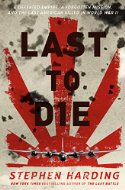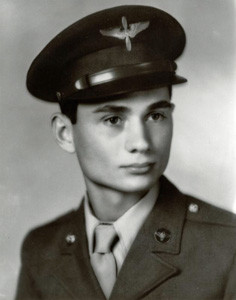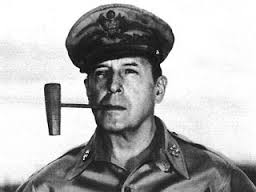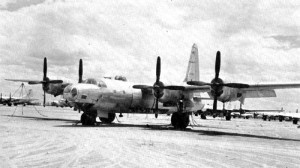
Last To Die By Stephen Harding
 This book is a tribute to U.S. Army Air Forces Sergeant Anthony J. Marchione, the last man to die in combat three days after Emperor Hirohito announced Japan’s surrender. It is also an absorbing account of little known or long forgotten historical events.
This book is a tribute to U.S. Army Air Forces Sergeant Anthony J. Marchione, the last man to die in combat three days after Emperor Hirohito announced Japan’s surrender. It is also an absorbing account of little known or long forgotten historical events.
Of special interest to those interested in WW2 are the days after Hirohito surrendered, but before formal ceremonies took place. During that period, a fanatical group within the Japanese military vowed to disobey the Emperor and fight on. They believed that surrender was so dishonorable that suicide, “both personal and national –– was vastly preferable.†Members of this group were responsible for attacks on American aircraft on August 17 and 18 and for the death of Marchione.
The confusion within the Allied Command over whether the attacks, in violation of the Japanese cease-fire, presaged a continuation of hostilities came perilously close to extending the war. As for Tony Marchione, Harding’s research reveals a series of other events that bore on his being in that Dominator on that sun-lit Tokyo day.
Anthony James Marchione, or Tony, as he was always known to family and friends, was in many ways the embodiment of the millions of young Americans who left their homes and families to serve in the nation’s Armed Forces and World War II. Indeed, Tony’s personal history – a loving, all-American son of immigrant parents who grew up in a small town, dreaming of a career as a musician until World War II drew him far from home – might make him seem almost like a caricature of the clean-cut, self-effacing, and resolutely brave servicemen portrayed in the scores of rousing patriotic movies made during the early 1940s.
Yet, by all accounts Tony Marchione was exactly the fine, upstanding young man that he appeared to be…
Like all high school graduate in June 1943, Tony knew that, when he turned 18, the draft was in his future. Like scores of young men, he enlisted to be able to choose his branch of the service. On November 20, 1943, Tony chose the U.S. Army air forces.
 He volunteered for aerial gunner training and, that completed, he was sent to combat training school. There he was assigned to the B-24 crew headed by 23-year-old Robert W. Essig. They were waiting for orders to join the Italy-based Fifteenth Air Force when they learned the Army, in its wisdom, had other plans.
He volunteered for aerial gunner training and, that completed, he was sent to combat training school. There he was assigned to the B-24 crew headed by 23-year-old Robert W. Essig. They were waiting for orders to join the Italy-based Fifteenth Air Force when they learned the Army, in its wisdom, had other plans.
Essig and his men were one of five heavy bomber crews chosen for advance training in photo reconnaissance. The change of plans was upsetting. “They had just completed three months training to drop bombs on the enemy, not take his picture.â€
Because photo-recon aircraft almost always flew alone, gunners would have to be very good at locating and engaging hostile aircraft. In addition, Tony and other gun crewmembers trained as photographer assistants, learning to attach cameras to mounts and load and change film magazines. But they didn’t go to the Mediterranean.
Bob Essig’s crew went to Clark Field on Luzon in the Philippines. In the middle of May, they joined the 20th Combat Mapping Squadron to fly combat missions. While thus occupied, Japan announced its unconditional surrender. A few days later Essig’s crew was sent to Yontan Airfield, on Okinawa. Tony celebrated his twentieth birthday there.
It was also where he heard about the new Army Point system for demobilization. Points were to be awarded for time in service, years deployed overseas and, among other things, total flight and combat flight hours. Anxious to be discharged sooner rather than later, Tony volunteered for B-32 reconnaissance missions.
The history of the B-32 Dominators was replete with production delays, breakdowns, equipment malfunctions and design compromises. Evaluations of their combat worthiness fell short of enthusiastic recommendation. But the formal decision to add the B-32 to the American air armada was made before the evaluations reached Washington, D.C. It is unlikely they were ever read.
The author explains that the decision to send the B-32 to the Pacific was “far more the result of political maneuvering in Washington than it was of military necessity. The B-29 groups in the theater were already doing a fine job of reducing much of Japan to smoking rubble, and adding a squadron or two of Dominators to the mix would not appreciably affect either the conduct or the outcome of the air war.“
 However, the decision was consequential for the men flying the trouble-plagued Dominators, then tasked with gathering reconnaissance information for the Allied occupation. Among other priorities, useable airfields and passable roads had to be located to set up a food distribution network. The civilian population of Japan was on the verge of starvation.
However, the decision was consequential for the men flying the trouble-plagued Dominators, then tasked with gathering reconnaissance information for the Allied occupation. Among other priorities, useable airfields and passable roads had to be located to set up a food distribution network. The civilian population of Japan was on the verge of starvation.
Harding provides readers with a fascinating description of specific Japanese fighter pilots, renowned for their combat skills, who attacked the Dominators, killed Tony Marchione and seriously wounded another crewmember.
Perhaps least previously known is the effect of the attacks and American casualties on senior officers throughout the Pacific Theater. Allied intelligence knew that military conspirators had already murdered ranking members of government who refused to cooperate with them. Were the attacks part of an organized effort to repudiate the surrender and the first indication of a renewed Japanese war effort? And if so what should the Allies do?
Supreme Allied Commander General Douglas MacArthur gambled and decided to do nothing, at least in the short term. Harding suggests that despite this being the second cease-fire breach, Mac Arthur did not want to resume Allied combat operations against Japan for fear of strengthening the anti-surrender military. As surely it would have if their influence dominated in Tokyo, possibly making the invasion necessary after all. Should an Allied invasion be required, the estimate was that the total number of Allied dead and wounded “could easily top 700,000.†The result for the Japanese would be a horrific number of civilian and military dead.
General of the Army Douglas MacArthur’s decision not to reignite hostilities against Japan because of the August 17th and 18th attacks on the B 32’s over Tokyo is undoubtedly one of the most important, and perhaps the least known, choices he made during the first weeks of his tenure as Supreme Cmdr. Allied powers. We can never be certain what might have happened had allied forces resumed even a limited bombing campaign against the home islands in retaliation for the interception of the Dominators, but we can make some educated assumptions based on the available facts.
We know that in August 1945 the total number of Japanese military personnel remaining under arms both at home and across Asia and the Pacific was in the millions. Although many units were certainly ill-equipped, ill trained, or decimated by disease or enemy action, others were highly experienced and remained both combat ready and highly motivated. By war’s end the Japanese had amassed thousands of aircraft and as many small, fast boats for use in suicide attacks against Allied forces massing off the whole islands. And millions of Japanese civilians were fully prepared to join in the defense of their homeland in the event of an Allied invasion.
Stephen Harding’s extensive research into official American and Japanese records, personal memoirs, letters and interviews with participants are the sources for this stirring story of bravery and grit and not so laudable political machinations.
The author skillfully weaves this tribute to U.S. Army Forces Sergeant Anthony J. Marchione with absorbing history. Readers become well enough acquainted with the Marchione family, and the life Tony wanted to live, to be moved to tears by the last chapter in which his body is brought home for final burial. At least this reader was. This is an extraordinary book by a superb military historian and gifted writer that will both touch and inform those fortunate enough to read it.

 The posts are coming!
The posts are coming!


0 comments
Kick things off by filling out the form below.
Leave a Comment